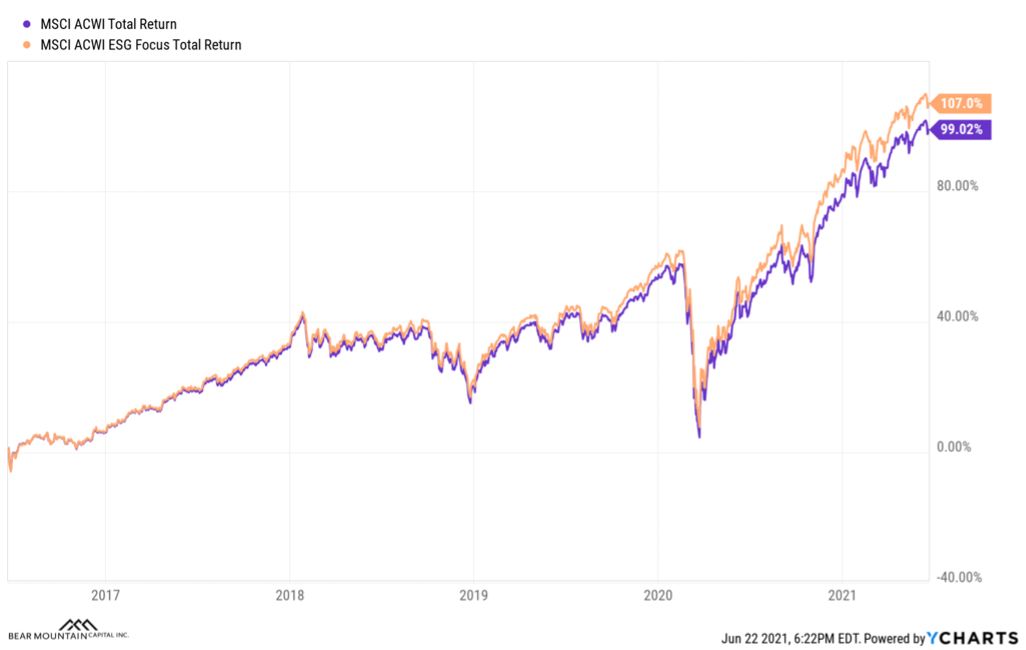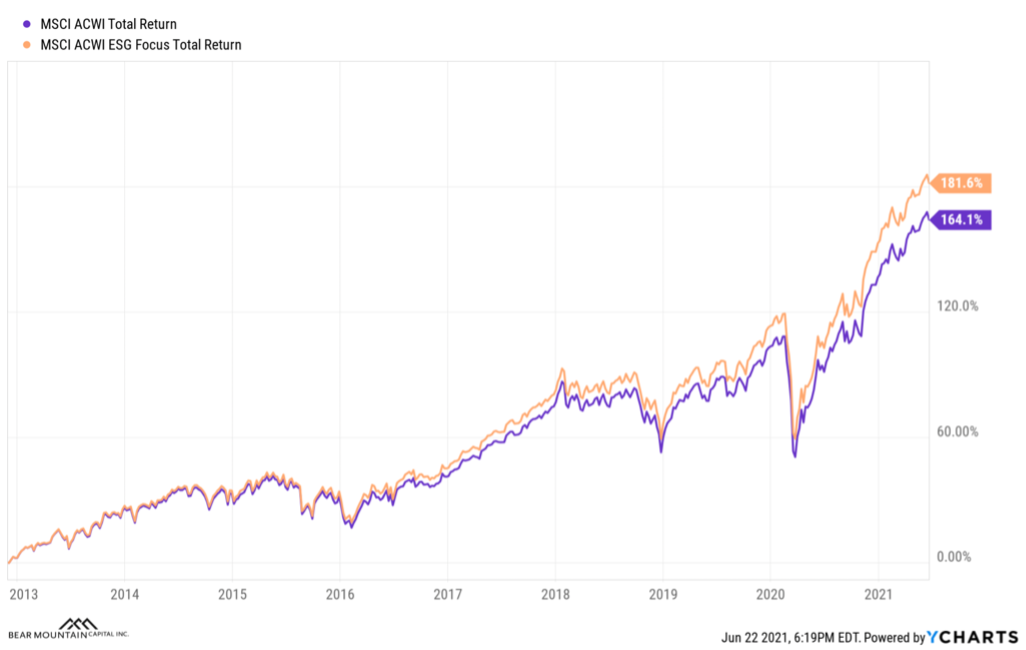ESG Investing: Return Tradeoff?
Investing trends don’t start out of nowhere. Usually, some event happens and pushes investors towards a certain area of the market. In the case of the last year, the pandemic left a lot of people stuck in their homes with more time on their hands than normal, so many turned to the stock market. The retail investor had a resurgence. The rise of the “meme stock” captured the headlines, but another movement with more staying power also gained steam, ESG investing.
ESG is an acronym for Environmental, Social, and Governance. Investing in ESG means the investment has a focus in one, two or all three of these categories. The types of ESG investments an investor can make mimic traditional investments. Individual stocks, bonds, exchange traded funds (ETFs), mutual funds, and private investments with an ESG focus are all available to the average investor. Compared to traditional themes, such as growth or value investing, ESG investing is a rather new phenomenon. There has been a 10-fold increase in the number of ETFs with an ESG mandate, over the last decade, while total ETFs by only about 2.5x over the same period [1].
Clearly there had been momentum behind ESG investing before 2020, but the pandemic seemed to create another surge for sustainable investing. S&P Dow Jones Indices LLC comes out with their Annual Survey of Assets report every year and in 2020, found the dollar value of investments that track their ESG index jumped by 35%. Over the same amount of time, the value tracking their S&P 500 index also jumped but (only) by 20% [2] [3]. If the goal of an investment is to maximize value, then why would there be so many more dollars flooding into ESG funds when there is an inherent return tradeoff between conventional ETF’s and those that make ESG a priority? Or is there a tradeoff? Below are four different performance graphs, comparing two worldwide indexes, MSCI’s All Country World Index and its ESG counterpart [4].
This first graph shows 1-year return history of the two indexes (ESG is in orange), and how closely their returns track each other.
These next two graphs are the same two indexes, but show the 3-year and 5-year returns.
And this graph is since inception of MSCI’s ESG Focus Index, which was launched 11/30/2012.
The above ESG index was built to track the non-ESG (parent) index 1:1. It uses “values-based screens” to create a framework for excluding companies based on how their products, conduct, or leadership impact the environment and society. This allows them to invest in almost all the same constituents as its counterpart, minus a few unsavory characters. As you can see in the charts above, especially the three and five-year, up until about right when the pandemic sell-off occurred, these two indexes tracked very closely. Both recovered but the ESG index outpaced.
With 20/20 hindsight, there is some clarity as to why ESG edged out conventional. Below are some examples of a few focuses in each category, and it feels like every one of these came up in the news cycle at some point over the last 12-18 months. Companies that are unable to create/invest in clean energy or have negative social and governance impacts can be screened out entirely.
It is fair to wonder if this trend will continue. Was this inflow due to the multitude of social and global issues that filled 2020? Will it stop being at the forefront of everyone’s minds once the pandemic is behind us? There is no way to predict the future and 2020 was as unique of a year as anyone can remember. However, 2021 has picked up right where 2020 left off. ESG assets across the globe have grown by 36% through the first half of 2021 [6] [7] [8].
The climate crisis and social change will be two themes of 2020 and the first part of 2021, that we will continue to see in the years ahead. Many institutional investors see the green energy transition as an ongoing investment opportunity, this combined with retail investors who want their invested dollars to have a positive social impact means ESG investing will only continue to grow.
[1] Number of Exchange Tradedd Funds (ETFs) Worldwide from 2003 to 2020
[2] S&P Dow Jones Indices 2020 Annual Survey of Assets
[3] S&P Dow Jones Indices 2019 Annual Survey of Assets
[6] Morningstar Global Sustainable Fund Flows: Q2 2021 in Review
[7] Morningstar Global Sustainable Fund Flows: Q1 2021 in Review
[8] Morningstar Global Sustainable Fund Flows: Q4 2020 in Review – Total Assets Table






